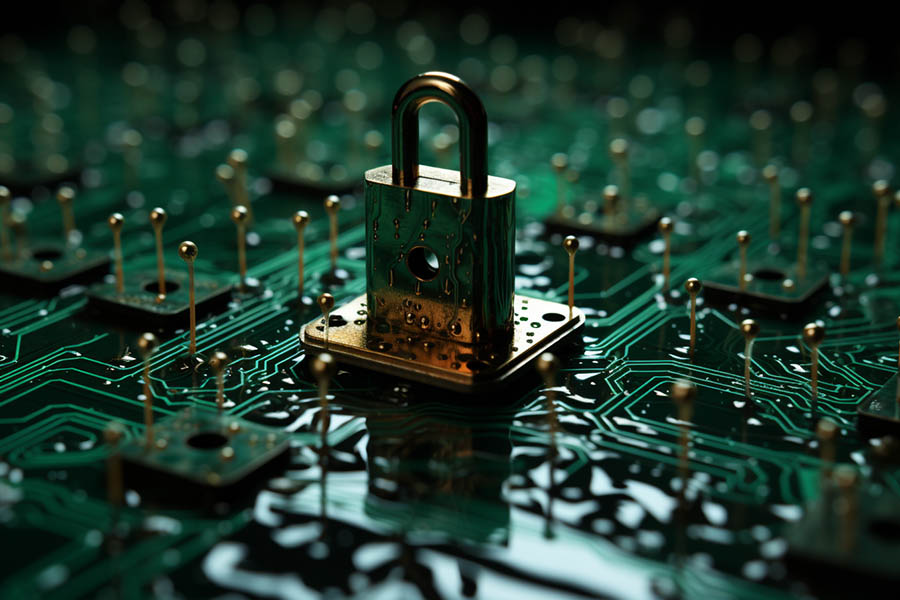Digital Evidence Management Systems (DEMS) have been gaining in popularity over the past years, because digital evidence is more and more present in many cases and has to be securely preserved, keeping its legal validity and the Chain of Custody intact, so it can be used in court, if necessary. But that is not all a Good DEMS should be capable of…
What is a DEMS?
In short, it is a secure management system for digital files, that has complete traceability, keeps the Chain of Custody and allows secure and centralized storage of any digital file to be analyzed later. This analysis usually is done by AI analyzers, able to find faces, voices or objects in videos or pictures. Or to transcribe audio to text (S2T) so the transcription can be easily search.
Besides this, a DEMS should provide secure accessibility from anywhere and be in compliance with local privacy and evidence requirements such a GDPR, CCPA, HIPAA and others. Not only must the system store all files in an encrypted way, but it has to be able to read and interpret any file format, and allow the users to watch or hear them directly. Sharing features are also important, as the evidence, in many cases, has to cross from police to the judicial system, or from the private sector to the police. And all of this, keeping always the integrity of the files intact under any circumstance.
Let’s see some of the most frequent use cases for a Digital Evidence Management System, although there are others:


1. Law Enforcement
One of the main use cases for a Digital Evidence Management System is obviously Law Enforcement. Nowadays much of the evidence in any regular case may have a digital origin, what makes a means of managing all of the files absolutely necessary. But the managing part, although important, is not the most important.
Evidence integrity and the Chain of Custody are at the forefront of the features that a good DEMS system must have. In the age of digital content, it is relatively easy to change things in a document, audio file o video recording. Usually that has no further impact, but when these files have to serve as evidence in a criminal case the judge must be absolutely sure that the file is in the exact same state that when it was collected in the first place by the police.
Furthermore, the DEMS system must have a powerful search feature, able to link different files between them when an investigative lead shows up. The ability to filter different types of files and to reunite them in packages, all separated by cases is also necessary. All of this empowers the officers to deal with all the digital evidence in a swift manner, without having to sift through hundreds of files for hours. Once evidence has been found, it is also necessary to be able to share that information with other departments or officers, as well as the judicial system, for when the case goes to trial.
2. Criminal Justice
Highly related to the previous use case is the Criminal Justice system. Prosecutors, defenders, attorneys and judges must all have seamless access to all the evidence pertaining to a specific case. In other words, evidence gathered by police has to be shared with the judicial system, in order to be presented in trial. And here, again, the Chain of Custody is of paramount importance, to ensure that the presented evidence has not been altered in any form along the way.
As the age of physical storage devices has passed, secure and encrypted transmissions must be guaranteed and, ideally, all the evidence should be stored in one centralized, secured, place, to be accessed by all the stakeholders. And in some specific cases part of the evidence must be redacted, in order to protect witnesses or the like. Hence the Digital Evidence Management System must provide the means to not only redact documents with the typical black bars, but also audio files (with beeps, for examples) or video files (with blurring or black boxes in the appropriate places). Especially in the case of video this is a challenge, as the part to be redacted may move across the frame.


3. Insurance Sector
Not only the public sector may use a DEMS. Insurance companies often deal with complicated claims and the evidence presented may well be in the form of an audio recording or a cellphone video or picture. In all of these cases it is necessary to store all of the information related to a specific claim in a centralized place, to be accessed by all of the employees or insurance expert to assess the claim.
One of the changes in the insurance sector has been that the claim experts not always have to travel to the place where the claim has originated, but they can assess the damage through a video call directly from the office, and store that recording in the DEMS for further reference. This not only streamlines and accelerates the claim process, but increases productivity and lowers costs for the insurance company.
4. Forensic Labs
In all of the previous three cases it may happen that some of the digital evidence comes from damaged devices (security cameras damaged by fire or flooding in the case of insurance claims, or intentionally damaged to get rid of incriminating evidence in the case of police cases). Whatever the cause of the damage, sometimes those devices hold really important information and it must be recovered. In those cases, a Digital Forensics Lab steps in.
For this particular use case the DEMS is not only the storage and management system for the recovered files, but also has to be able to link the restored or recovered segments to the original file, in the right places, so the expert, agent or officer can see both versions side by side and evaluate which one provides more information. All of this, obviously can be attached to a case file to serve as evidence in court.


5. Retail Sector
Another private use for a DEMS is the retail sector. Big shopping malls or nation-wide store chains may want to have all of their security cameras tied into a VMS (Video Management System) and save all the footage. However, VMS, by design, are not appropriate to store files securely and avoid possible tampering with them.
Hence, when a case comes up that involves some security issue, the files have to be moved to a DEMS, so internal security (and, possibly, Law Enforcement and a judge) can watch the evidence and be assured that it is the original file, that the Chain of Custody is intact and that no changes have been applied to the evidence. All of this can shorten legal proceedigs, and result in better security and more favorably solved cases for the Store or mall.
Conclusion
We have seen that the Digital Evidence Management Systems, although primarily used by Law Enforcement, Intelligence Agencies and the Judicial branch, also have applications in private sectors, like insurance and retail. Whenever you have a lot of videos that have to be securely managed and analyzed, and it is of importance to keep the Chain of Custody intact, a Digital Evidence Management System like our own Intelion is the solution.
